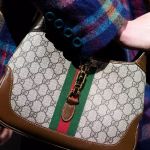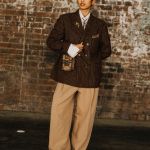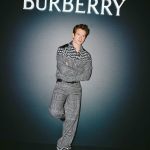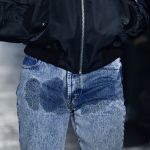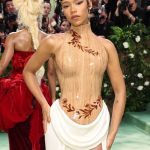
What was H&M doing on the Met Gala red carpet?
Redefining the concept of “aspirational”
May 9th, 2024
Awkwafina, Adwoa Aboah, Paloma Elsesser, Quannah Chasinghorse, Hari Nef, and Stefon Diggs were the celebrities dressed by H&M for the Met Gala 2024. And while the idea of H&M participating in the Met Gala alongside heavyweight luxury fashion may raise some eyebrows, it will be even more surprising to discover that the mega-Swedish brand has been present on the Met Gala red carpet since as far back as 2015. Why did we notice it in this edition? Perhaps because, for the first time, not only did H&M dress one of the largest groups of attending stars, but it also appeared alongside another group of brands usually not associated with luxury and haute couture, like Da’Vine Joy Randolph, who, for example, wore a custom-made dress by Gap. Another interesting fact is that, after dressing the K-Pop band Stray Kids, it was Tommy Hilfiger who generated more online conversations than any other brand of the evening with over 40,000 social mentions between five-thirty and eight-thirty last Monday – surpassing Alaïa, Burberry, Loewe, and Margiela by a wide margin. Now, if the presence of brands like Topshop, Gap, H&M, and Brother Wellies at the Met Gala has lasted for at least a decade (albeit more quietly), this year the absence of several luxury players like Louis Vuitton, Gucci, and Bottega Veneta has immediately brought to light the presence of the so-called "mall brands", namely the brands usually found in shopping malls.
@hm Hari Nef on her way to the Met Gala 2024 wearing the biggest bow. #HM #metgala #HariNef originalljud - H&M
In the case of H&M, the move comes from an attempt to set itself apart from its mass-market counterparts, implemented some time ago with the launch of the Studio collection. Gap too tried to move upmarket with the hiring of new CEO Richard Dickinson last summer, and the appointment of Zac Posen as vice president and creative director. And the presence of mall brands, perhaps more humble than luxury but financially gigantic, is a testament to their commercial power and their immense penetration into the global market. But this very presence indicates how the concept of aspirationalism is changing for the industry, not so much for fashion itself, but for clothing in a broader sense. While many luxury brands have adopted a fast-fashion model, covering all market categories, imposing a faster rotation of goods on stores, saving on raw materials and manufacturing, and simplifying many designs to cut costs; many mall brands have realized that they could produce the same cheap basics, making them slightly upscale for a fraction of the price, improving their campaigns and e-commerce, and positioning themselves higher in the market.
@andreacheong_ I thinkkk this is H&M premium im not that impressed tbh and idk why its harder to find in store #hmpremium #hmfashion #autumnfashioninspo #autumn2023outfit #wardrobeessential #qualityfashion #mindfulmondaymethod #howtoshopsustainably original sound - Andrea
The idea, one assumes, is to capture aspirational customers looking for dupes by trying to enter the territory previously occupied by accessible luxury with lines like H&M Premium or COS Atelier but also brands like Massimo Dutti. And this doesn’t only concern luxury: H&M sandals, for instance, are a replica of Birkenstock's and cost half the price; a Western-style leather belt costs just €25; meanwhile, COS's Column Jeans, which cost less than any Levi's, are making waves on TikTok. The problem, however, lies in luxury, especially for occasions like the Met Gala: independent brands that still operate in the luxury sphere may pass; but if hypothetically the Met red carpet were to open up to more cheap market alternatives, it would be the big couture names that would flee – exclusivity means everything in this world. But it's unlikely to happen: after all, these brands have been participating in the Met Gala for a decade, and luxury always has the final say. H&M's presence at the Met Gala, however, as well as Hunter Schafer and Iris Law's attendance at the opening of the new Soho mega-store in New York, collaborations with Mugler and Rokh launched with star-studded parties and music by Arca, signal to current and potential customers that there's no problem in buying something from H&M, that the brand doesn’t look out of place next to other designer outfits in the same outfit, and, in general, that on the marketing front, the boutique and the mall speak the same language. This may not seem so, but they surely find themselves together on the same red carpet.









